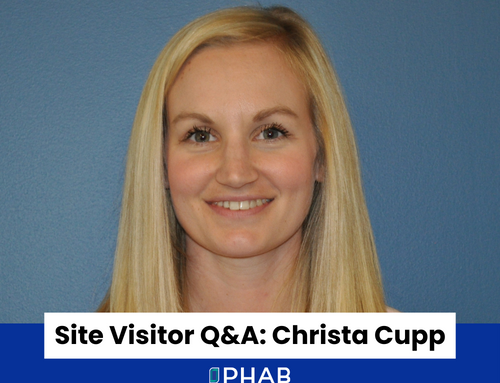Change may very well be the only constant in our work, and the pace of change is faster now than ever before. As a public health practitioner working on process and system improvements for several years, I am in complete agreement with Woodrow Wilson who said, “If you want to make enemies, try to change something.”
Being a change agent isn’t easy, but there are many techniques and methods that can help. Much like a cook assembling a casserole, I’ve found that my recipe includes a mix of Lean Six Sigma, PDSA (Plan, Do, Study, Act), project management, design thinking, facilitation skills, performance management, and the most recent ingredient, change management.
What is Change Management?
For your improvement projects, change management is literally the melted cheese on top of the casserole (for those who haven’t experienced it, the cheese is the best part!). I wish I had added change management to the mix years ago. No matter the scale of the change, big or small, you will be working with people. Understanding their behaviors and emotions associated with change will help you better engage in the process and lead change efforts in your agency.
According to Prosci’s An Introduction to Change Management Guide, change management is the application of a structured process and set of tools for leading the people side of change to achieve a desired outcome. Understanding the process of change, the emotions involved, and the predictable behaviors triggered is critical if you are improving processes or systems, innovating, changing behaviors or mindsets, or influencing policies.
The introduction guide states: “To move out of the current state, an individual needs awareness of the need for change and desire to participate and support the change. Successfully moving through the transition state requires knowledge on how to change and the ability to implement the required skills and behaviors. In the future state, they need ability and reinforcement to sustain the change.”
The ADKAR Model
Prosci’s Individual Change Model, called ADKAR, explains the way individuals change through:
- A – Awareness of the need for change
- D – Desire to support the change
- K – Knowledge of how to change
- A – Ability to demonstrate new skills and behaviors
- R – Reinforcement to make the change stick
This model helps you understand where to focus efforts during a change. Think about a current project or initiative in your agency. Does everyone know why the change is needed? Do they know why it needs to happen now? Do they understand the risks of not changing? If you answered “no” to any of these, think about how you might convey these messages to your staff in order to reduce resistance and help cultivate understanding and adoption.
Prosci’s Best Practices in Change Management report compiles 20 years of industry-leading research from change managers, project leaders and executives around the world into the largest body of change management research to date. It highlights how the success of your initiatives depends on how individuals in the organization embrace and adopt the changes. In addition, it emphasizes:
- Change management is both a process and a competency.
- Change management happens at three levels: for individuals, on a project, and across an enterprise.
- The change management process is broken down into:
- preparing for change (which ensures that questions like “why are we making this change?” are answered);
- managing change (creating plans and using ADKAR to execute the plans); and
- reinforcing change (celebrating success and measuring performance to ensure you don’t backslide).
- Initiatives with excellent change management are six times more likely to meet objectives than those with poor change management.
Change Management CDPHE
At the Colorado Department of Public Health and Environment (CDPHE), we are fortunate to have a strong partnership with our sister agency, the Colorado Department of Transportation (CDOT), that embarked on their own change management journey several years ago. This partnership has helped CDPHE work to increase our skills and abilities around change management by:
- Purchasing an organizational license from Prosci enabling the department leaders and staff to access change management assessments, resources, training and tools.
- Supporting staff to complete the 3-day Change Management Practitioner class (through Prosci or CDOT’s training program). This increased the number of CDPHE leaders with advanced skills and knowledge available for projects and initiatives.
- Offering change management assessments and components (like communication plans and extra focus on reinforcing changes) to quality improvement (QI)/Lean projects.
- Providing new training opportunities like the “Introduction to Change Management” class available for all staff, and the “Leading Change” class for supervisors and managers. Change management workshops and trainings have also been delivered upon request to teams and partners.
These efforts help ensure staff have the change management skills necessary for today’s workforce, which is one of the strategic skills called out in the National Consortium for Public Health Workforce Development Report: A Call to Action. So, if you’re trying to make changes, or simply work with human beings, you won’t regret increasing your competence and confidence in the people side of change. As with the cheese blanketing our casserole, change management is the elemental ingredient you can’t afford to leave out; it goes well with other methods and techniques you are already cooking with in your agency.
More cheese, please.
How Can You Learn More?
- Join the Public Sector Change Management Group (contact [email protected] to be added to the distribution list).
- Go to the Prosci website for resources, webinars, and training opportunities.
- Read Switch (by Dan and Chip Heath), ADKAR: A Model for Change (Jeffrey Hiatt), Employee’s Survival Guide to Change (Jeffrey Hiatt), Leading Change or Accelerate (John Kotter), and People Before Things (Chris Laping).





